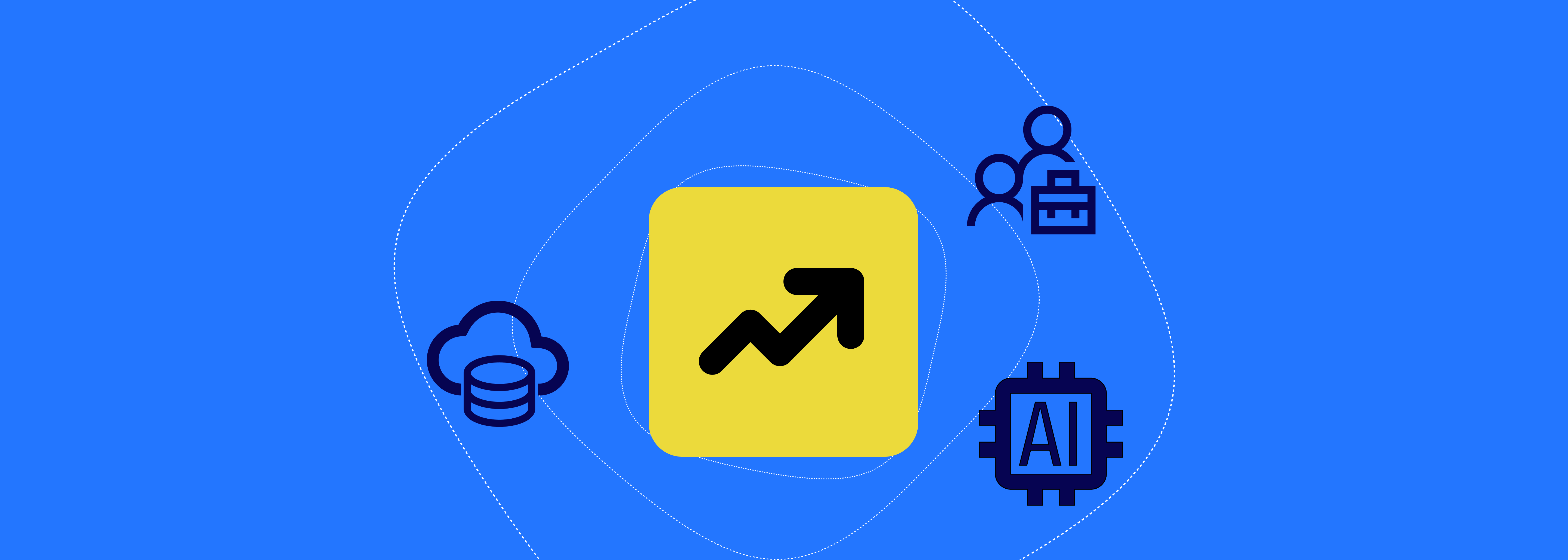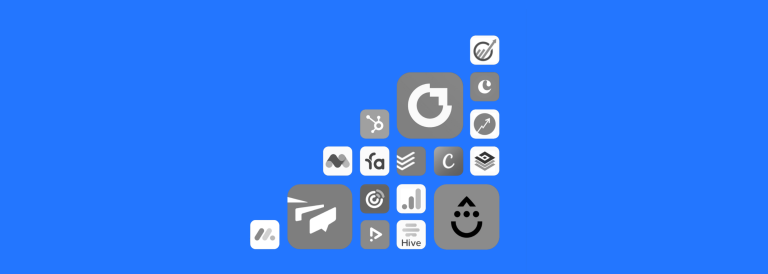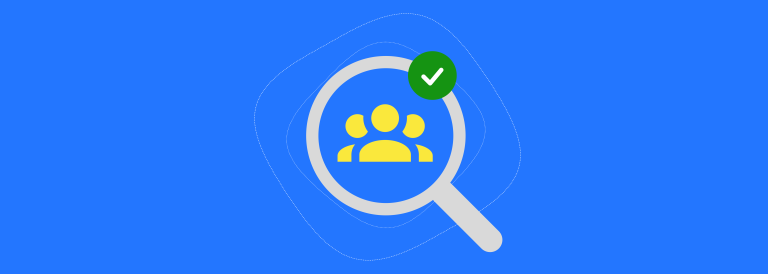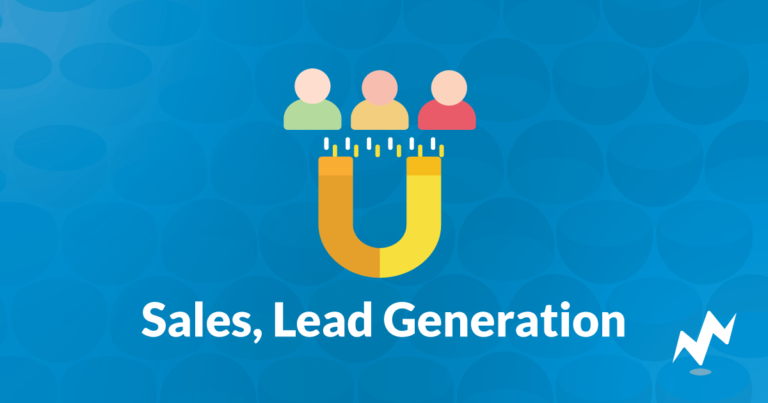Top 7 SaaS Trends: Where SaaS is Heading
Businesses need SaaS, and that is not going to change.
175,000 is the estimated number of SaaS tools in the world. And the number will keep growing as businesses need to optimize everything from small to large operations to keep a competitive edge.
During this year, Statista predicts that the revenue in the SaaS part of the universe will reach 349 billion US dollars. With the expected annual growth rate of nearly 20%, by 2029 revenue will reach 818 billion US dollars.
If you are a SaaS company or planning to start your own software solution, then knowing these trends will help guide your strategy for the coming years.
SaaS Trend 1: Better security and privacy
More and more businesses are moving to the cloud, so the need for strong security has never been greater.
Cyber threats are getting more and more sophisticated, so SaaS is going to operate on the principle of ‘never trust, always verify.’ It may seem paranoid, but in the digital world, it’s better to be safe than sorry. So now, every access request, no matter where it comes from (inside or outside of the network), is thoroughly vetted.
Encryption isn’t new in this part of the universe, but it’s getting better every day. SaaS companies are using encryption to protect data both at the rest and in transit. For example, end-to-end encryption makes sure that data is unreadable to unauthorized parties. To strengthen email security, organizations can rely on a DMARC checker to validate their email policies and safeguard against spoofing attempts.
When it comes to regulations like GDPR, CCPA, and others, companies really need to know what is a privacy policy for a website and how to implement it. Most websites and apps use cookies and other tracking technologies to collect data from users. Some can get it without asking, but some need compliance, and consumers need to know where their data is and what’s happening with it. They also need freedom to not allow the use of their data. That’s why having a privacy policy is so important for SaaS companies, along with a clear cookie consent mechanism to ensure users can control their data preferences.
SaaS Trend 2: The rise of AI and machine learning
The first thought that comes to mind when talking about new technologies is artificial intelligence (AI) and machine learning (ML). Once, those expressions were nothing but the wishful thinking of sci-fi writers, but now they’re deeply integrated with modern technology and businesses.
Recently, we’ve seen the launch of many new AI SaaS tools but you also may have noticed that a great number of SaaS companies have become AI tools as well. Huge players like HubSpot or ClickUp, now utilize AI to make their software even more powerful.
What can AI and ML do to help SaaS companies?
AI and ML are great in analyzing a vast amount of data, subsequently identifying patterns and trends, which allows businesses to make informed decisions. SaaS applications are integrating predictive analytics to help companies to improve customer satisfaction, among other features.
Also, AI and ML are helping customers enjoy personalized experiences. AI can offer personalized support, customized recommendations, or target marketing campaigns.
Increased efficiency is just another target that AI and ML are helping with. You can now see how fast you get answers with AI powered customer support, not to mention elimination of manual tasks. It’s expected that AI will take more and more of the workload.
Integrating AI into a SaaS tool is also easier than ever before. You can see how AI can make your tool more useful and try adding it as a feature to attract more users. Some SaaS teams experiment with ready-to-use TTS or a voice API to turn written instructions or updates into audio, adding accessibility and convenience without major development work.
Top AI SaaS:
SaaS Trend 3: The expansion of vertical SaaS
OK, let’s first explain very briefly what horizontal and vertical SaaS is, considering how many complicated definitions there are. Horizontal SaaS solutions are meant for a wide range of industries, while vertical SaaS is all about specialization.
That’s how vertical SaaS are designed–to help with the unique needs of specific industries. And their popularity is only growing.
For example, there are industries like healthcare and finance that have different (often more stringent) compliance and security demands than other industries. Vertical SaaS providers understand those unique needs and they can help in designing solutions that would meet regulatory standards.
A good example is EMS CAD platforms, which are tailored to support emergency responders with dispatch coordination and compliance-focused reporting.
In the healthcare sector, vertical SaaS options include ABA practice management software for behavioral therapy providers or telemedicine workflow systems that handle patient scheduling, e-prescriptions, and HIPAA-compliant data storage. In the finance sector, examples include loan origination software that automates credit assessments and compliance checks, and portfolio management platforms designed specifically for investment advisors and wealth managers.
However, this expansion has also meant that there is an oversaturation of these types of tools. So, while it’s still great to launch a solution specifically for a small business aspect or industry, horizontal SaaS also have a great opportunity to stand out, since it’s much more complicated to build and launch. Not everyone wants to rely on hundreds of SaaS tools at the same time.
SaaS Trend 4: The hybrid cloud approach
There is a debate between public and private cloud solutions, which has been going on for years. However, for most businesses with sensitive data, the hybrid cloud approach is going to be the winner.
By mixing the best of both worlds, businesses can have greater flexibility and security.
Public clouds offer cost-effective scalability, but private clouds offer greater security and control. The hybrid solution should let businesses keep sensitive data on private servers while less critical info can go on the public servers.
With the right expertise, such as Snowflake consulting, organizations can seamlessly integrate data across both environments, improve analytics, and ensure security compliance. This way, businesses can also optimize the cost while gaining deeper insights from their data.
By leveraging multi cloud management platforms, businesses can effectively navigate the complexities of utilizing multiple cloud services while optimizing performance and cost-effectiveness. By utilizing cloud cost monitoring tools, businesses can ensure efficient cost management and resource allocation in their hybrid cloud environments.
According to a recent trend analysis by Radixweb’s SaaS experts, “hybrid cloud adoption is accelerating as businesses seek greater deployment control.
Top cloud SaaS:
SaaS Trend 5: Low-code and no-code platforms
No-code and low-code solutions for building web and mobile apps have become very powerful and capable of making advanced apps, especially with AI now. These solutions can help in building apps/websites from zero or with creating a new feature. For example, with the software tool, Sceyt, you can launch in-app chat messaging in minutes with minimal coding.
Some of these solutions include:
What does this mean in the SaaS space? Easier launches but a lot more competition. Some entrepreneurs opt for this approach to create a niche solution and launch it in weeks. Other established businesses can also take advantage of these solutions by creating an app just for a specific purpose and simply integrating it into their current systems. For example, many businesses use these to quickly create mobile apps or client portals.
If you have a similar project in mind, you can now build it with much less resources than hiring a full-time team to do it from scratch.
SaaS Trend 6: Green SaaS
SaaS is already green by default because it lowers the need to use a hard disc drive for storing data. But there are always more shades of green.
Data centers eat a lot of energy, but SaaS providers are taking steps to make them more energy-efficient. They can use renewable energy sources and optimize cooling systems. They’re most definitely reducing their carbon footprint.
Do you know what else makes a greener SaaS? Remote work. When you stay home, you’re reducing the use of transportation, which reduces the level of carbon emissions. It may not be the first thought in the mind of remote SaaS teams, but many of these companies operate remotely, especially in the early stages. This shift is even more seamless today, as an employer of record makes it easier to manage global hiring and compliance for remote teams.
SaaS Trend 7: Blockchain in SaaS
Many got used to hearing about blockchain connected to cryptocurrency, but the truth is, SaaS can also have some benefits from it.
Blockchain has a decentralized nature that speaks about enhanced security and transparency. For SaaS, that means that there will be secure, tamper-proof records of data exchanges and transactions. Industries like finance and healthcare can certainly appreciate this enhanced security.
Blockchain is not only meant for transactions. You can build decentralized applications (DApps) which are, logically, apps that run on a blockchain network. SaaS providers are exploring the potential of DApps, often turning to blockchain development services to help create decentralized solutions that eliminate the need for a central authority.
SaaS trends takeaways
SaaS is not slowing down anytime soon. They are already using AI, but they can give it more authority and more work, thus letting people free of tedious manual labor. There will be a hybrid cloud approach where companies can choose their own business packages at the cost they like.
No-code and low-code is becoming much more sophisticated and not only a solution for entrepreneurs. And another great news is that you’ll probably get more work from home days, because SaaS is getting greener.
Keep these SaaS trends in mind when developing your solutions to stand out today and in the future.

Written by Andres Muñoz
If you would like to receive the latest deals added to NachoNacho, make sure you sign up for our newsletter below. We’re adding amazing software discounts you can’t miss!
Sign up for our newsletter







